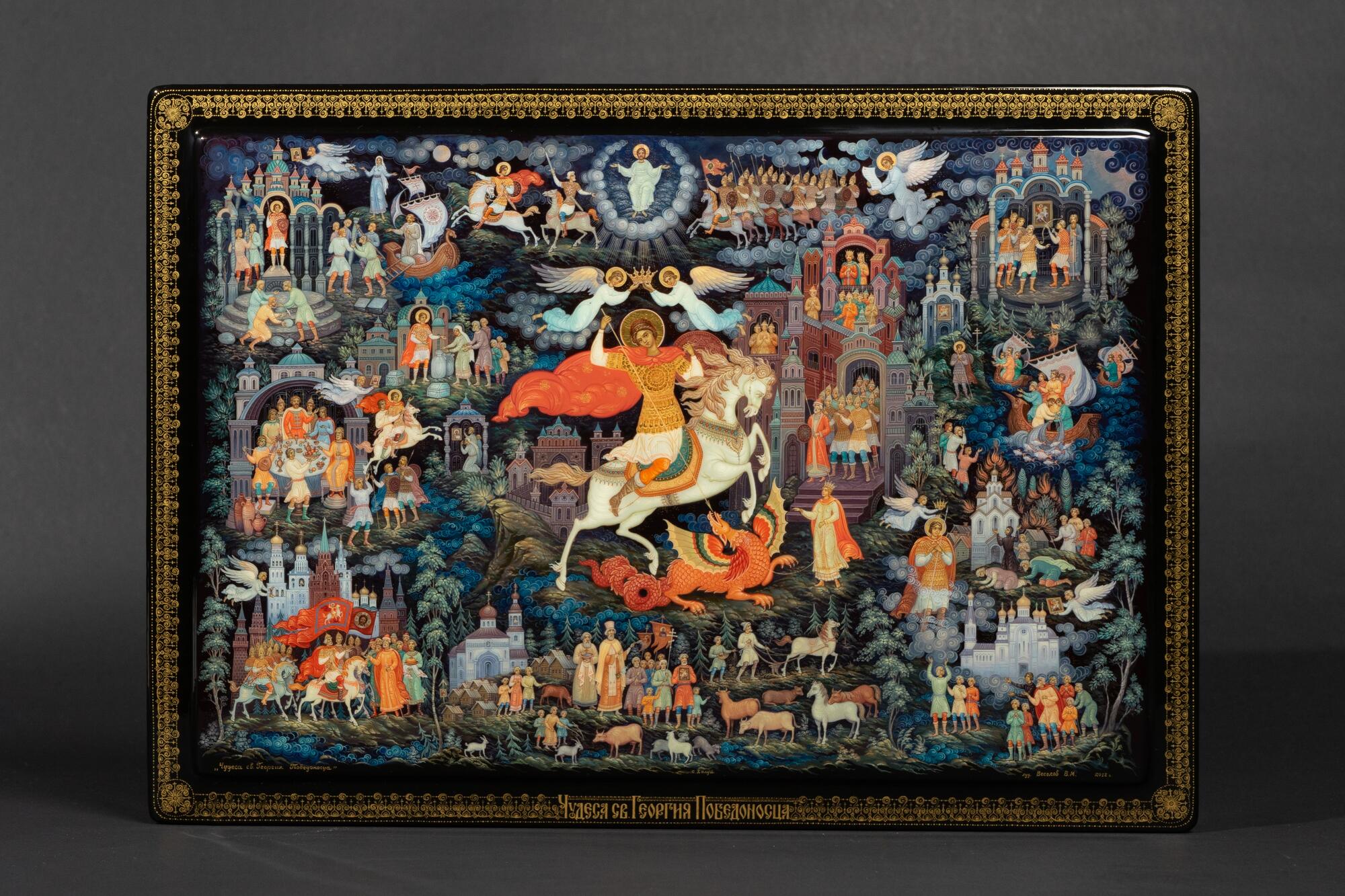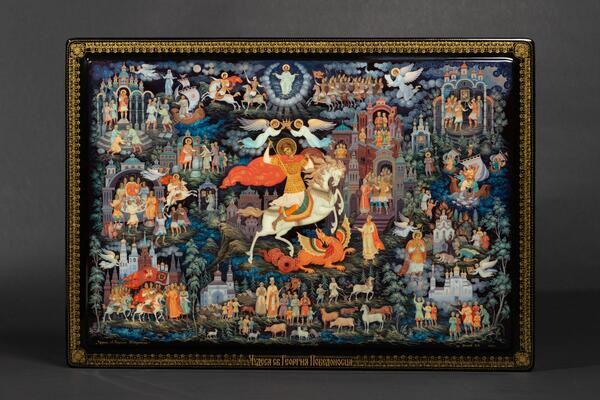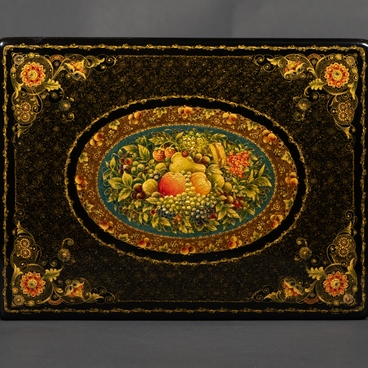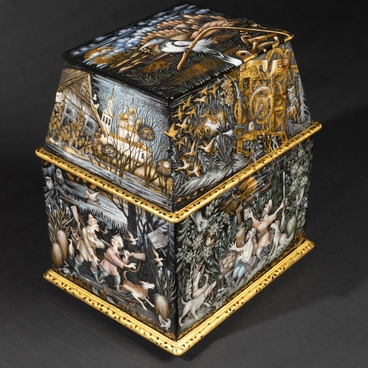The box ‘The Miracles of Saint George the Trophy-Bearer’ was created by a miniature painter from Kholuy Viktor Veselov. He painted a large-scale composition on a relatively small item. The artist managed to place multiple miniature scenes on the rectangular lid. In them he depicted the posthumous miracles described in the ‘Life, Martyrdom and Miracles of Saint George’.
According to the legend, George the Trophy-Bearer served for Roman Emperor Diocletian: George was a brave man, so in his youth he held a high military position. During the time when Christians were persecuted by the Roman Empire, he did not renounce his faith in God, and for this he was subjected to cruel tortures. Saint George bravely endured all of them, and God gave him a special gift — the ability to perform miracles. Since then, St. George the Trophy-Bearer was considered a Great Martyr.
The artist chose the most famous miracle of St. George as the central plot of the miniature — the rescue of the princess from the winged serpent. The monster attacked people near the city of Lydda, where the body of the saint was buried. The author depicted his spirit — a young warrior in golden armor on a rampant white horse. With his right hand, he plunges the tip of the spear into the mouth of the winged serpent. The artist skillfully placed accents: the fluttering red cape attracts the viewer’s gaze to the easily floating figure of the rider. The dramatic tension of the composition is balanced by the face of St. George: it expresses the most profound spiritual calmness.
In addition to the main composition, the author depicted other events of the saint’s life. Such technique with many separate scenes came from iconography: on the borders of hagiographic icons artists usually placed special border scenes of the main episodes of the life (or posthumous miracles) of a saint. Here the artist turned to other famous deeds of George: ‘the miracle with the Saracen’, ‘the miracle of the widow’s column’, “the rescue of fishermen at Cape Fiolent”.
In the lower part of the composition, the author placed scenes of peasant life. He depicted a plowman with a plow, peasant shepherds and a large procession carrying an icon of St. George. The author chose these plots because the Great Martyr is considered the patron saint not only of warriors, but also of farmers. Translated from Greek, his name means “farmer”.
According to the legend, George the Trophy-Bearer served for Roman Emperor Diocletian: George was a brave man, so in his youth he held a high military position. During the time when Christians were persecuted by the Roman Empire, he did not renounce his faith in God, and for this he was subjected to cruel tortures. Saint George bravely endured all of them, and God gave him a special gift — the ability to perform miracles. Since then, St. George the Trophy-Bearer was considered a Great Martyr.
The artist chose the most famous miracle of St. George as the central plot of the miniature — the rescue of the princess from the winged serpent. The monster attacked people near the city of Lydda, where the body of the saint was buried. The author depicted his spirit — a young warrior in golden armor on a rampant white horse. With his right hand, he plunges the tip of the spear into the mouth of the winged serpent. The artist skillfully placed accents: the fluttering red cape attracts the viewer’s gaze to the easily floating figure of the rider. The dramatic tension of the composition is balanced by the face of St. George: it expresses the most profound spiritual calmness.
In addition to the main composition, the author depicted other events of the saint’s life. Such technique with many separate scenes came from iconography: on the borders of hagiographic icons artists usually placed special border scenes of the main episodes of the life (or posthumous miracles) of a saint. Here the artist turned to other famous deeds of George: ‘the miracle with the Saracen’, ‘the miracle of the widow’s column’, “the rescue of fishermen at Cape Fiolent”.
In the lower part of the composition, the author placed scenes of peasant life. He depicted a plowman with a plow, peasant shepherds and a large procession carrying an icon of St. George. The author chose these plots because the Great Martyr is considered the patron saint not only of warriors, but also of farmers. Translated from Greek, his name means “farmer”.



